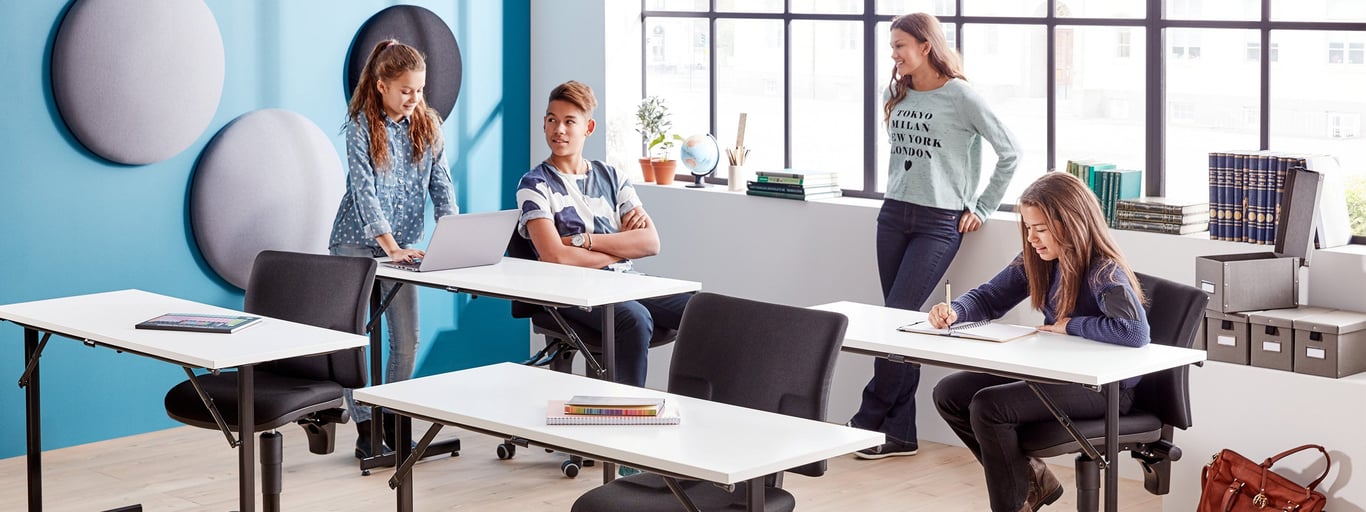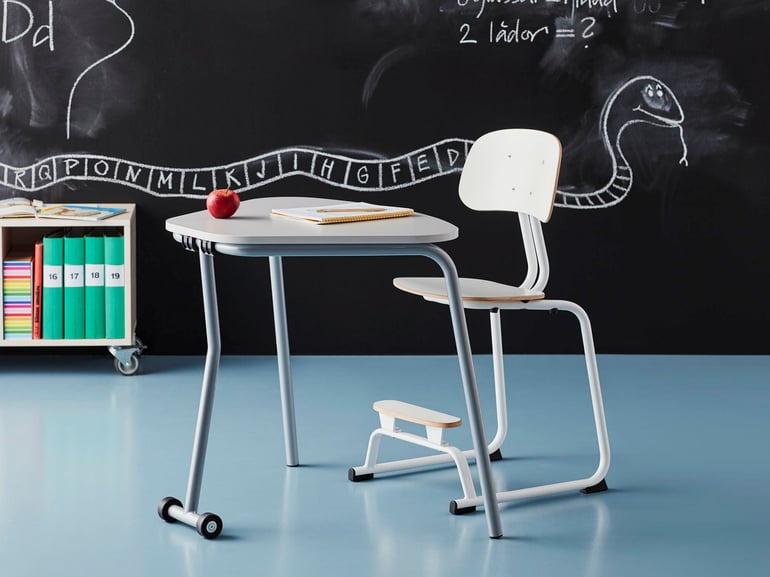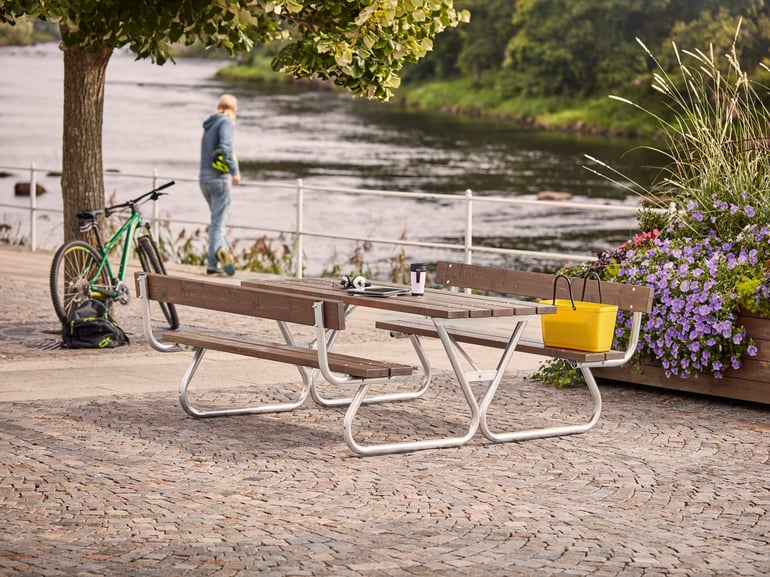- AJ Products UK
- Blog: Tips to Inspire Happiness at Work
- Tips & trends
- Furnish the classroom and create an inspiring learning environment

Guide: Furnish the classroom to make an inspiring learning environment
A school with well-planned furnishings facilitates the learning process for students. With the right choice of school furniture, you can create an inspiring classroom and an accessible learning environment that can be adapted for both individual and group activities. Even small changes to the setup can help reduce distractions and create a calmer, more productive environment for everyone.
A classroom should stimulate both individual and group work
Look for furniture that is flexible so that the classroom layout can be easily changed depending on activities and needs. A larger table encourages spontaneous meetings and makes it easier to gather for group work. Extra worktables on wheels that can be rolled in are a great solution when the needs of the room change.
One tip is to furnish the school canteen so that it may be used as an extra workspace during times when it would otherwise be empty. Also, remember to choose practical and durable furniture with features that make everyday life easier for students and staff. Stackable chairs save space when stored, and hanging chairs that can be hanged on the edge of the table make cleaning easier.
Another simple measure to reduce distractions and improve concentration is to introduce a secure mobile phone storage cabinet. By asking students to hand in their phones at the start of the lesson, you create a calmer, more focused learning environment. Lockable phone cabinets provide a practical and safe way to store devices during class time, helping students stay present and engaged.
Create more room within classrooms
With partition screens, you can easily create clear areas in the classroom for different activities and shield them off. In a physical learning environment with many students, sometimes screened-off zones are needed. Bookshelves, cabinets, or storage carts can also be used as room dividers.
"A trend is that classrooms are becoming more and more individualised. Some students may have difficulty concentrating and therefore need to sit alone, while others work best in an open landscape", says Kerstin Metz, key account manager at AJ Office Interiors.
Durable, environmentally friendly material
To withstand the school's tough environment and wear and tear, school furniture requires a lot. According to Kerstin, there is a completely different strain on school furniture than in other contexts.
"The furniture should look good even after ten years of use. The furniture needs to be able to withstand use," says Kerstin. A durable material recommended to withstand the school's tough environment is linoleum. Linoleum is made from natural and renewable materials, durable, and easy to clean, making it an optimal choice for classroom furnishings. The material also has good sound-absorbing properties.
Improved posture with ergonomic furniture
Since students and staff often sit for long periods at a time, furniture that is ergonomically designed to avoid unnecessary strain on the body is important. The furniture should be tailored to the task and subject, and the classroom should offer several different types of seating. Height-adjustable tables and benches are important for good working posture. Also, consider the sound environment – a high sound environment can impair the concentration and efficiency of both students and teachers. Consider investing in sound absorbing panels.
Lighting is also an important factor that affects the classroom environment. Previous research at Lund University shows that daylight in classrooms affects the stress hormone cortisol and affects the behavior of students. Ensure that the lighting does not shine heavily against the whiteboard or desk surface, which can cause eye fatigue.
5 things to consider when furnishing the classroom
- Choose flexible furniture that can be adapted to different situations.
- Linoleum is a durable material for school furniture.
- Height-adjustable tables and benches for better ergonomics.
- Use sound absorbers to reduce noise levels.
- Review the lighting in the classroom.
FAQ
- A good learning environment includes flexible, ergonomic furniture, adequate lighting, sound-dampening materials, and organized spaces that encourage both individual and group work.
- Flexible furniture allows for easy reconfiguration of the classroom layout, accommodating different activities and learning styles, and ensuring the space meets the varying needs of students.
- Durable and eco-friendly materials like linoleum are ideal for school furniture. They are easy to clean, long-lasting, and have good sound-dampening properties.
- Using sound-absorbing materials such as acoustic panels, curtains, and specially designed furniture can significantly reduce noise levels, enhancing focus and productivity.
Get the latest product launches and offers sent direct to your inbox
Do you want to receive exclusive offers, information about new products and inspiration on how you can improve your workplace? Sign up for our free newsletter and be the first to receive our best offers.*By clicking subscribe, I confirm that I have read the privacy policy.

